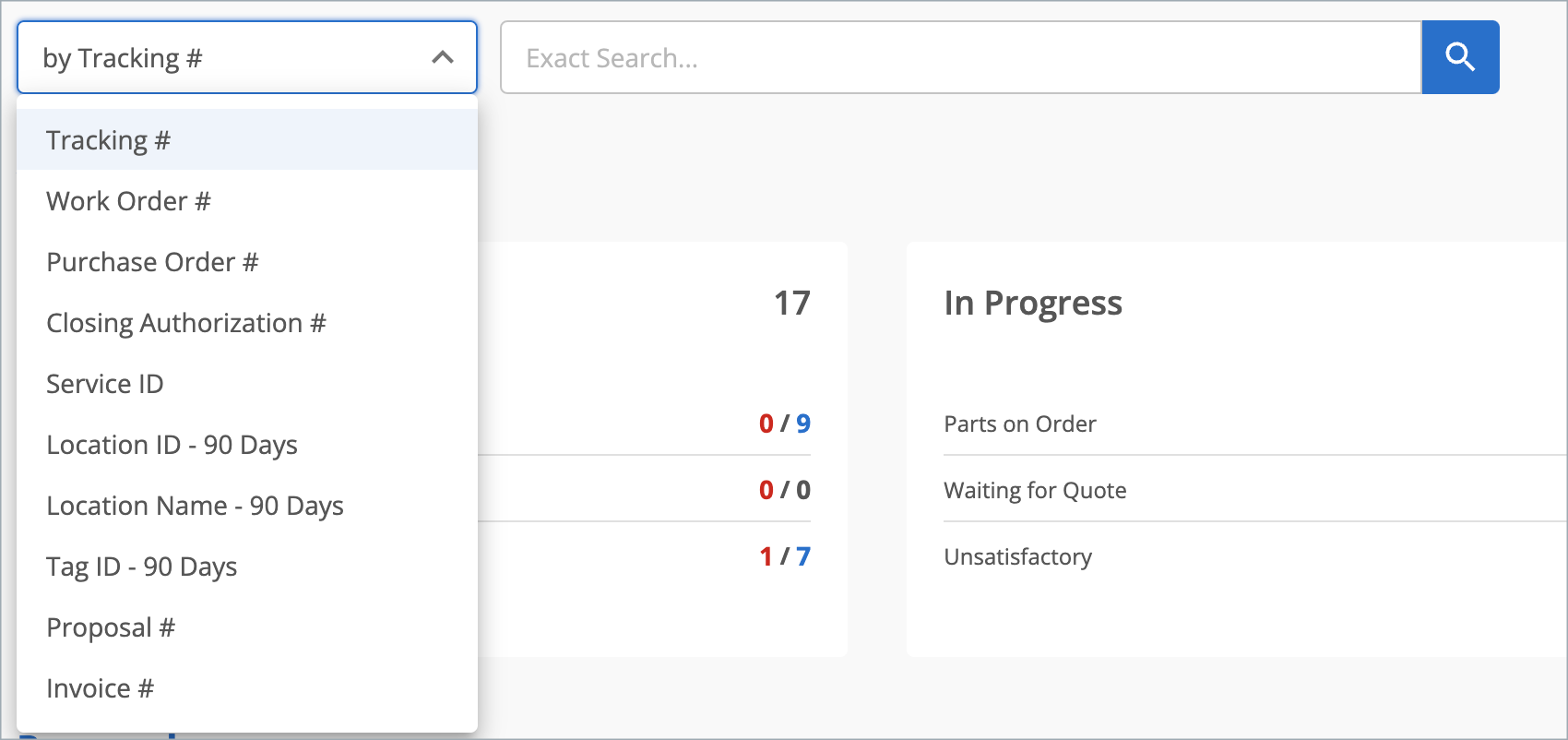Searching for Work Orders on the Home Page
Owned by Chellie Esters

⦿ How to Search from the Actionable Landing Page
- In the Search Criteria field, click the drop-down menu.
- Select the desired criteria.
- (For Location ID only) (Optional) Check Exclude Maintenance to exclude work orders generated from the Planned Maintenance module.

- Enter the appropriate information in the text field:
- Tracking#, Closing Authorization#, Service ID, Location ID, and Tag ID uses "exact search" search criteria.
- Work Order# and Purchase Order# uses "starting with..." search criteria.
- Invoice # and Proposal # uses "contains" criteria.
- Click Magnifier icon. The records (work orders, invoices, and proposals) matching the entered criteria displays.
Home Page Search Criteria
You may search for work orders by the following criteria:
- Tracking #: Service Automation automatically assigns a unique number for each generated work order. This field uses the Exact Search criteria.
- Work Order #: When a work order is generated, the Work Order number is automatically the same as the Tracking number (or Tracking #). Permissioned users may use a custom Work Order number, in line with business practices. This field uses the Starting With Search criteria.
- Purchase Order #: When a work order is generated, the Purchase Order # is automatically the same as the Tracking number (or Tracking #). Permissioned users may use a custom Purchase Order number, in line with business practices. This field uses the Starting With Search criteria.
- Closing Authorization #: This number is given to a service provider when (s)he checks out of a work order for the last time using Service Automation’s IVR System. This field uses the Exact Search criteria.
- Service ID: A static number, generated by the Planned Maintenance module, used by a service provider to check in and check out through the IVR System. This field uses the Exact Search criteria.
Location ID - 90 Days: A unique identifier for each location. You may search for work orders in the Open, In Progress, Completed and Invoiced statuses for the past 90 days for the desired Location. This field uses the Exact Search criteria.
You can paste multiple (up to 600) location IDs copied from an Excel sheet or any other document. Separate your location IDs in one of the following ways:
- Space: 000 001 002 003
- Comma: 000,001,002,003
- Line break:
000
001
002
003
- While selecting a Location ID you may also elect to exclude maintenance work orders (those work orders generated through the Preventive Maintenance module. Work orders generated through both the Service Automation Dashboard and the Preventive Maintenance module will appear, by default. Typically, Dashboard-generated work orders require any further attention, while Preventive Maintenance-generated ones generally do not.
- Location Name - 90 Days: An identifier for locations. Use full or partial locations name to locate work orders. The returned list will display all locations with matches to the search criteria used.
- Tag ID - 90 Days: A unique identifier for each piece of equipment, as configured in the Equipment Module. Permissioned users may search for and navigate to the Equipment Module through searching for the Tag ID. This field uses the Exact Search criteria.
- Proposal #: The unique identifier for each proposal. This number is either automatically generated when a proposal is created (starting with 'prp') or is typically created and manually entered by the service provider. This field uses the Contains criteria.
- Invoice #: The unique identifier for each invoice. This number is typically created and manually entered by the service provider. This field uses the Contains criteria.
In this Article
Related Articles
-
Page:
-
Page:
-
Page:
-
Page:
-
Page:
-
Page:
-
Page:
